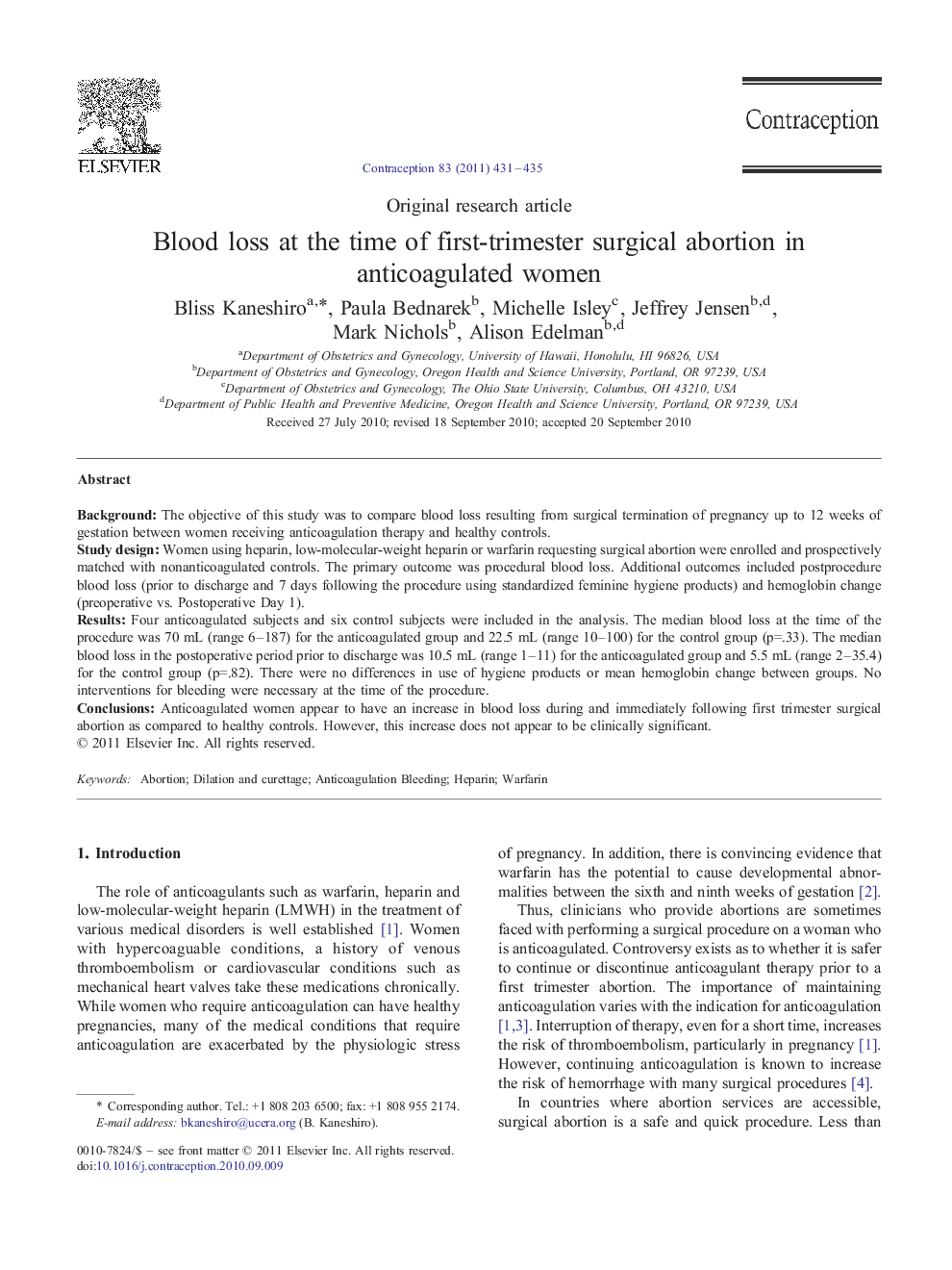| Article ID | Journal | Published Year | Pages | File Type |
|---|---|---|---|---|
| 3914052 | Contraception | 2011 | 5 Pages |
BackgroundThe objective of this study was to compare blood loss resulting from surgical termination of pregnancy up to 12 weeks of gestation between women receiving anticoagulation therapy and healthy controls.Study designWomen using heparin, low-molecular-weight heparin or warfarin requesting surgical abortion were enrolled and prospectively matched with nonanticoagulated controls. The primary outcome was procedural blood loss. Additional outcomes included postprocedure blood loss (prior to discharge and 7 days following the procedure using standardized feminine hygiene products) and hemoglobin change (preoperative vs. Postoperative Day 1).ResultsFour anticoagulated subjects and six control subjects were included in the analysis. The median blood loss at the time of the procedure was 70 mL (range 6–187) for the anticoagulated group and 22.5 mL (range 10–100) for the control group (p=.33). The median blood loss in the postoperative period prior to discharge was 10.5 mL (range 1–11) for the anticoagulated group and 5.5 mL (range 2–35.4) for the control group (p=.82). There were no differences in use of hygiene products or mean hemoglobin change between groups. No interventions for bleeding were necessary at the time of the procedure.ConclusionsAnticoagulated women appear to have an increase in blood loss during and immediately following first trimester surgical abortion as compared to healthy controls. However, this increase does not appear to be clinically significant.
